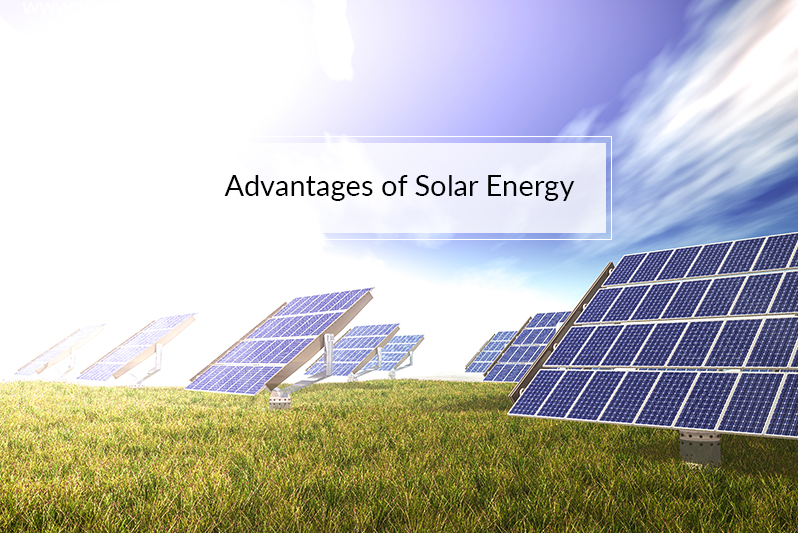Solar Energy 101: A Beginner's Overview to Sustainable Energy Solutions
As the world progressively changes towards lasting power options, understanding the basics of solar power becomes important for both individuals and businesses. By discovering the benefits of solar technology, together with the financial rewards and installment processes, one can acquire a more clear perspective on how to properly integrate this eco-friendly resource right into their energy method.
Understanding Solar Power
At its core, comprehending solar power entails grasping the fundamental concepts of just how sunshine can be exchanged functional power. Solar energy is stemmed from the sun's radiation, which can be harnessed with various innovations. The primary device for this conversion is the photovoltaic effect. This phenomenon happens when sunshine strikes semiconductor materials, normally silicon-based, within solar batteries. The power from the sunshine delights electrons in the semiconductor, allowing them to flow easily and produce straight current (DC) electricity.

Recognizing solar power likewise entails identifying its ecological benefits. By making use of sunshine, we can reduce greenhouse gas discharges and decrease air pollution, adding to a more sustainable future. The innovations in technology and performance of solar systems continue to boost their practicality, making solar power an increasingly appealing option for global energy requirements.
Types of Solar Power Systems
Various types of solar energy systems are commonly employed to harness solar power for electricity generation. The primary categories consist of solar (PV) systems, focusing solar power (CSP) systems, and solar thermal systems.
Photovoltaic or pv systems use solar panels composed of silicon cells that convert sunlight directly into electricity. These systems are versatile and can be installed on rooftops, ground installs, or incorporated into structure materials.
Concentrating Solar Power systems, on the various other hand, employ mirrors or lenses to concentrate sunshine onto a little location, generating warmth that drives a heavy steam wind turbine to create electrical energy - Simply Solar Illinois. CSP systems are typically deployed in large-scale power plants and need straight sunshine, making them less ideal for cloudy areas

Each kind of solar power system has its special features, applications, and suitability relying on geographic place, power demands, and budget, making it necessary to assess options based upon particular circumstances. - Simply Solar Illinois

Benefits of Solar Power
Using solar power through different systems not only supplies a lasting method to produce power however also uses a wide variety of advantages. additional resources One of the most considerable advantages is the decrease in greenhouse gas emissions, adding to a cleaner setting and combating climate adjustment. Solar energy is renewable, implying it is inexhaustible and readily available as long as the sunlight radiates, unlike nonrenewable fuel sources, which are finite and depleting.
Additionally, solar energy can cause significant cost savings in time. Property owners and companies can lower their electrical energy bills substantially, and in a lot of cases, they might make credit scores for excess power generated via net metering. Furthermore, the solar industry develops jobs, from manufacturing to installment, stimulating local economic climates.
An additional compelling advantage is energy independence. By producing their very own power, people and neighborhoods Homepage can minimize dependence on external power sources, improving resilience against fluctuating power rates and supply disruptions. Furthermore, solar power systems call for minimal upkeep, making them a practical choice for lasting energy generation.
Setup Refine Review
The installation procedure for solar power systems commonly involves a number of crucial actions that ensure effective combination into a home. A thorough website evaluation is carried out to examine the roofing's alignment, shielding, and architectural stability, which are important to enhancing solar panel performance. Following this assessment, the design phase starts, where a customized solar power system is set up based upon the property owner's power requirements and preferences.
Once the design is finalized, the necessary authorizations and authorizations are acquired from regional authorities, guaranteeing compliance with regulations. The real setup includes mounting the solar panels on the roofing or ground, attaching them to an inverter, and integrating the system with the property's electrical configuration. This phase might additionally involve installing battery storage systems, relying on the style.
After installment, a complete evaluation is conducted to validate the system's performance and safety. The system is appointed, and house owners are educated Recommended Reading on its procedure and maintenance. With the installment full, the solar power system can begin producing renewable resource, contributing to sustainability and lowering utility prices. This structured strategy makes sure that solar systems are both effective and dependable, optimizing their long-term advantages.
Financial Motivations and Savings
Discovering the economic incentives and cost savings related to solar energy systems can substantially boost the charm of making the button to renewable energy. Different rewards exist at government, state, and local levels, developed to lower the initial expenses connected with solar installment. Among one of the most notable incentives is the federal solar tax obligation credit scores, which enables house owners to subtract a percent of their planetary system installment prices from their federal tax obligations. As of 2023, this credit score stands at 30%, supplying significant financial savings.
In addition to tax obligation credit scores, lots of states use rebates that can further reduce in advance expenses. Some utility firms likewise offer performance-based incentives, fulfilling solar power manufacturing with time. Funding options, such as solar lendings and leases, permit customers to install systems with little to no down settlement, making solar power a lot more available.

Additionally, solar systems can increase residential property worths, supplying a solid return on investment. In general, the combination of incentives and financial savings makes solar power an economically appealing choice for many households.
Verdict
Finally, solar energy represents an important element of sustainable power remedies, supplying a pathway toward reduced carbon footprints and improved environmental management. The diverse kinds of solar power systems, coupled with substantial economic incentives, help with broader fostering amongst individuals and areas. Comprehending the installation procedures and benefits related to solar power encourages stakeholders to make educated choices. Eventually, the transition to solar power not only cultivates ecological obligation but additionally advertises economic savings and power independence.